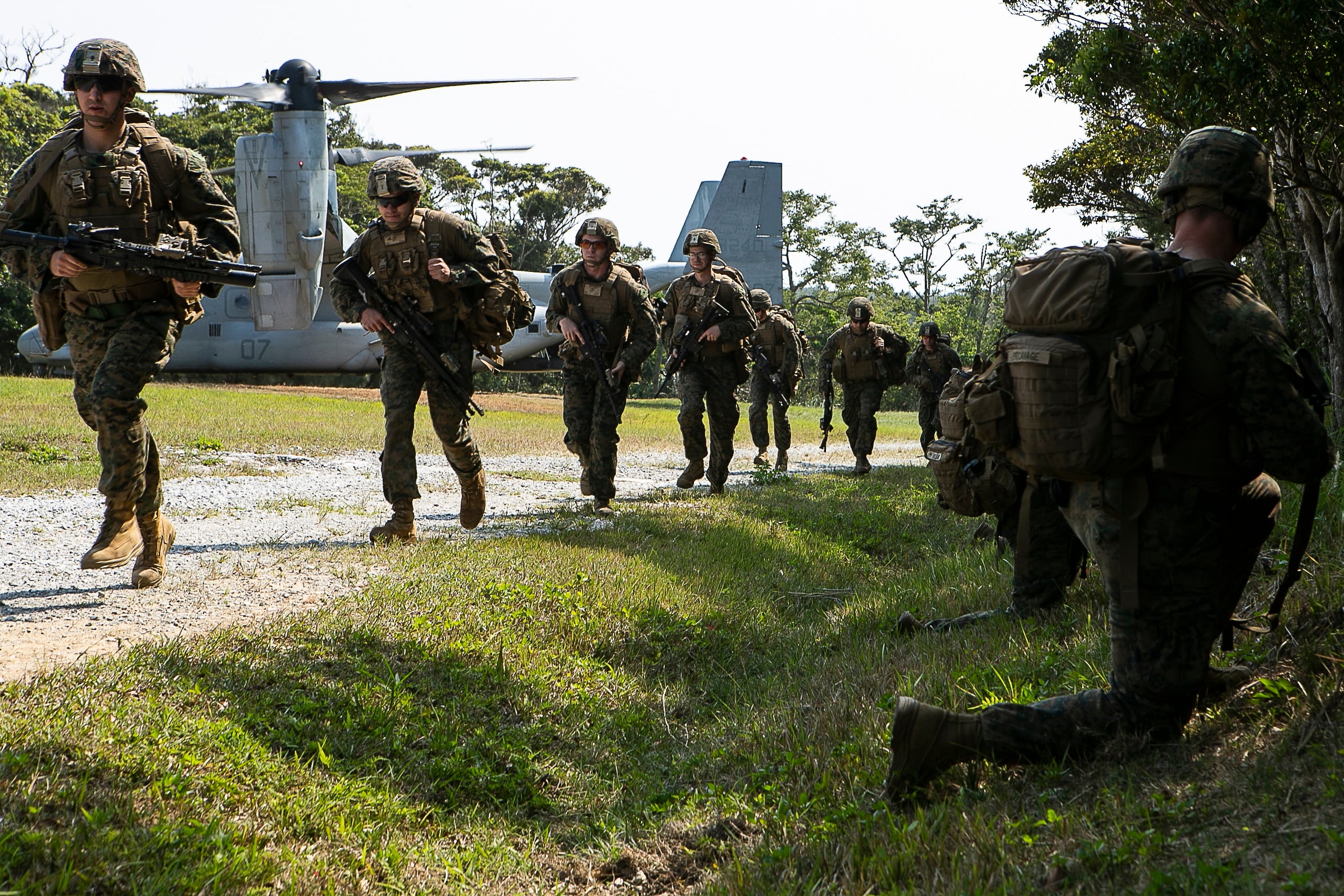Officers from all combat arms military occupational specialties will be eligible to command future Marine littoral regiments, which will make up the Corps’ future main ground combat force in the Pacific, a Marine Corps spokesman confirmed.
There is “no guarantee that the MLRs will all be commanded by infantry, or that they’ll all be commanded by artillery ― they can be commanded by any combat arms officer,” Gen. Eric Smith, the assistant commandant of the Marine Corps, told reporters on Feb. 28 at the Pentagon.
The Corps is still in the early stages of implementing the new formation, having designated the first Marine littoral regiment on Thursday.
During a ceremony on Marine Corps Base Hawaii, the 3rd Marine Littoral Regiment was created out of 3rd Marines ― a historic infantry regiment.
RELATED

Though a timeline has not been released, the Corps plans to transition infantry regiment 4th Marines and artillery regiment 12th Marines, both based on Okinawa, Japan, into Marine littoral regiments.
The new Marine littoral regiments will consist of one infantry battalion, one missile battery, one littoral anti-air battalion and one logistics battalion.
Once all three littoral regiments are created two — 3rd Marine Littoral Regiment and 4th Marine Littoral Regiment — will be led by infantry officers, while 12th Marine Littoral Regiment will be headed by an artillery officer.
“The next MLR CO will likely be a combat arms colonel, and that individual will be selected through the normal board process,” Capt. Andrew Wood, a Marine Corps spokesman, told Marine Corps Times in an emailed statement.
Though combined armed formations are nothing new in the Corps, opening the command for the most important regiments in a Marine division to non-infantry officers is new.
The transitions will leave III Marine Expeditionary Force with no traditional infantry regiments, a sign that infantry may lose some of its prominence in the MEF.
The infantry battalions that remain under the littoral regiments will have a slightly different role than they are currently undertaking.
The Corps believes the new unit will be able to deploy in small units of 75–100 Marines who will set up and operate out of expeditionary advanced bases highly dispersed in the littorals.
From those bases, Marines will be able to launch ship-sinking missiles, track enemy movements, attack the enemy’s cyber systems and potentially even hunt submarines.
The main job for the infantry will be to potentially capture the land where these expeditionary advanced bases will be placed, protect the bases from enemy attacks and go on small-scale raids.
Smith said having an artillery officer lead one of the Marine littoral regiments will add even more flexibility.
“I want lots of different viewpoints here,” Smith said. “The 12th MLR that will be commanded by 12th Marines, commanded by an artillery officer, that individual will have a different viewpoint and will be excellent at command and control and long range fires.”
While the culture change may cause some Marine’s concern, Maj. Gen. Jay Bargeron, commanding general of 3rd Marine Division said, “change is nothing new,” in the Corps at Thursday’s redesignation ceremony.
“Marines have always been at the forefront of change when required, generating innovative solutions to challenging operational problems,” he said.
Smith said Marines joining the Marine littoral regiment in the future will be more focused on their day-to-day jobs than the military occupational specialty of their regimental commander or the history of the regiment.
“If you’re a lance corporal, you just see a colonel,” Smith said. “Trust me, you have no idea what their military occupational specialty is, you just see eagles on their collar and say, ‘Yes, ma’am.’”




